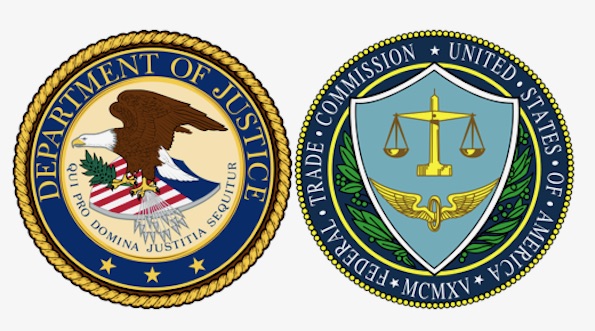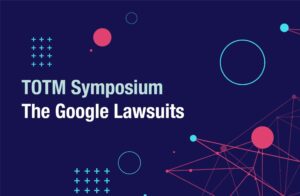Showing results for: “Valid C1000-170 Study Materials 🕗 C1000-170 Latest Exam Answers 🏮 Trusted C1000-170 Exam Resource 🦍 Search on 【 www.pdfvce.com 】 for 【 C1000-170 】 to obtain exam materials for free download 🐀Valid C1000-170 Dumps Demo”
Announcing the TOTM Symposium on the 2020 Draft Joint Vertical Merger Guidelines
Truth on the Market is pleased to announce its next blog symposium: The 2020 Draft Joint Vertical Merger Guidelines: What’s in, what’s out — and do we need them anyway? February 6 & 7, 2020 Symposium background On January 10, 2020, the DOJ Antitrust Division and the Federal Trade Commission released Draft Joint Vertical Merger ... Announcing the TOTM Symposium on the 2020 Draft Joint Vertical Merger Guidelines
The Ghosts of Antitrust Past: Part 2 (IBM)
The Department of Justice began its antitrust case against IBM on January 17, 1969. The DOJ sued under the Sherman Antitrust Act, claiming IBM tried to monopolize the market for “general-purpose digital computers.” The case lasted almost thirteen years, ending on January 8, 1982 when Assistant Attorney General William Baxter declared the case to be ... The Ghosts of Antitrust Past: Part 2 (IBM)
The Ghosts of Antitrust Past: Part 1
Big Tech continues to be mired in “a very antitrust situation,” as President Trump put it in 2018. Antitrust advocates have zeroed in on Facebook, Google, Apple, and Amazon as their primary targets. These advocates justify their proposals by pointing to the trio of antitrust cases against IBM, AT&T, and Microsoft. Elizabeth Warren, in announcing ... The Ghosts of Antitrust Past: Part 1
The 2020 Draft Joint Vertical Merger Guidelines: What’s in, what’s out — and do we need them anyway?
On January 10, 2020, the DOJ and FTC released their draft 2020 Vertical Merger Guidelines. “Challenging anticompetitive vertical mergers is essential to vigorous enforcement. The agencies’ vertical merger policy has evolved substantially since the issuance of the 1984 Non-Horizontal Merger Guidelines, and our guidelines should reflect the current enforcement approach. Greater transparency about the complex ... The 2020 Draft Joint Vertical Merger Guidelines: What’s in, what’s out — and do we need them anyway?
The Upsides of Collusion and Concentration
Conspiracies and collusion often (always?) get a bad rap. Adam Smith famously derided “people of the same trade” for their inclination to conspire against the public or contrive to raise prices. Today, such conspiracies and contrivances are per se illegal and felonies punishable under the Sherman Act. It is well known and widely accepted that ... The Upsides of Collusion and Concentration
FTC v. AbbVie – Questioning the Agency’s Enforcement Authority
A pending case in the U.S. Court of Appeals for the 3rd Circuit has raised several interesting questions about the FTC enforcement approach and patent litigation in the pharmaceutical industry. The case, FTC v. AbbVie, involves allegations that AbbVie (and Besins) filed sham patent infringement cases against generic manufacturer Teva (and Perrigo) for the purpose ... FTC v. AbbVie – Questioning the Agency’s Enforcement Authority
Debating the FTC v Qualcomm Amicus Brief, a Summary
Qualcomm is currently in the midst of a high-profile antitrust case against the FTC. At the heart of these proceedings lies Qualcomm’s so-called “No License, No Chips” (NLNC) policy, whereby it purportedly refuses to sell chips to OEMs that have not concluded a license agreement covering its underlying intellectual property. According to the FTC and ... Debating the FTC v Qualcomm Amicus Brief, a Summary
The Facts Show That No License/No Chips Was A Successful Policy, Not an Empty Threat – A Reply to Manne and Auer’s New Argument
In their original post, Manne and Auer argued that the antitrust argument against Qualcomm’s no license/no chips policy was based on bad economics and bad law. They now seem to have abandoned that argument and claim instead – contrary to the extensive factual findings of the district court – that, while Qualcomm threatened to cut off ... The Facts Show That No License/No Chips Was A Successful Policy, Not an Empty Threat – A Reply to Manne and Auer’s New Argument
Is FRAND Litigation a Credible Threat?: A reply to Mark Lemley, Douglas Melamed and Steven Salop
Last week, we posted a piece on TOTM, criticizing the amicus brief written by Mark Lemley, Douglas Melamed and Steven Salop in the ongoing Qualcomm litigation. The authors prepared a thoughtful response to our piece, which we published today on TOTM. In this post, we highlight the points where we agree with the amici (or ... Is FRAND Litigation a Credible Threat?: A reply to Mark Lemley, Douglas Melamed and Steven Salop
Manne and Auer’s Defense of Qualcomm’s Licensing Policy Is Deeply Flawed
Geoffrey Manne and Dirk Auer’s defense of Qualcomm’s no license/no chips policy is based on a fundamental misunderstanding of how that policy harms competition. The harm is straightforward in light of facts proven at trial. In a nutshell, OEMs must buy some chips from Qualcomm or else exit the handset business, even if they would ... Manne and Auer’s Defense of Qualcomm’s Licensing Policy Is Deeply Flawed
Exclusionary Pricing Without the Exclusion: Unpacking Qualcomm’s No License, No Chips Policy
Qualcomm is currently in the midst of a high-profile antitrust case against the FTC. At the heart of these proceedings lies Qualcomm’s so-called “No License, No Chips” (NLNC) policy, whereby it purportedly refuses to sell chips to OEMs that have not concluded a license agreement covering its underlying intellectual property. According to the FTC and ... Exclusionary Pricing Without the Exclusion: Unpacking Qualcomm’s No License, No Chips Policy
Why the FTC had to Abandon the Duty to Deal Argument Against Qualcomm
On November 22, the FTC filed its answering brief in the FTC v. Qualcomm litigation. As we’ve noted before, it has always seemed a little odd that the current FTC is so vigorously pursuing this case, given some of the precedents it might set and the Commission majority’s apparent views on such issues. But this ... Why the FTC had to Abandon the Duty to Deal Argument Against Qualcomm






